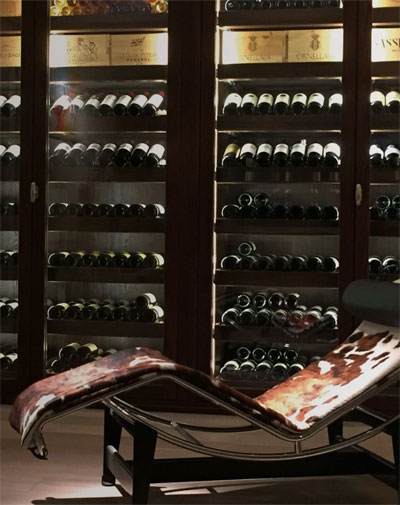
Tasting Notes: The 2021 Château Lynch-Bages exhibits a deep, dark hue. Aromas of crème de cassis, plums, and spices are prominent, framed by notes of black truffle and cigar wrapper. On the palate, it is medium to full-bodied, offering concentrated flavors with a muscular structure and a layered, powerful profile. The finish is long and lusty, suggesting significant aging potential.
Robert Parker`s Wine Advocate: 93-95 points. "Medium to full-bodied, concentrated and muscular, it`s a serious, layered, powerful, youthfully structured wine that will come together beautifully with maturation in barrel."
Wine Spectator: Noted for its mix of black cherry and black currant flavors, with warm cast iron, sweet tobacco, and chestnut notes, showing a lively, savory edge that adds cut and energy. Best from 2026 through 2040.
The Wine Cellar Insider: 94 points. "Smoke, cedar, cigar box, cassis, spearmint, and spice nuances set the perfume where it needs to be. The palate, with its layers of vibrant, sweet, fresh, energetic, chewy fruits leaves a lasting impression."
Food Pairing: Grilled Ribeye Steak, Roast Duck with Cherry Sauce

For orders €100,00 and
above we deliver free to
your place
For orders below €100,00 delivery
charge €10,00 within city limits.
Tasting Notes: The 2021 Château Lynch-Bages exhibits a deep, dark hue. Aromas of crème de cassis, plums, and spices are prominent, framed by notes of black truffle and cigar wrapper. On the palate, it is medium to full-bodied, offering concentrated flavors with a muscular structure and a layered, powerful profile. The finish is long and lusty, suggesting significant aging potential.
Robert Parker`s Wine Advocate: 93-95 points. "Medium to full-bodied, concentrated and muscular, it`s a serious, layered, powerful, youthfully structured wine that will come together beautifully with maturation in barrel."
Wine Spectator: Noted for its mix of black cherry and black currant flavors, with warm cast iron, sweet tobacco, and chestnut notes, showing a lively, savory edge that adds cut and energy. Best from 2026 through 2040.
The Wine Cellar Insider: 94 points. "Smoke, cedar, cigar box, cassis, spearmint, and spice nuances set the perfume where it needs to be. The palate, with its layers of vibrant, sweet, fresh, energetic, chewy fruits leaves a lasting impression."
Food Pairing: Grilled Ribeye Steak, Roast Duck with Cherry Sauce

For orders €100,00 and
above we deliver free to
your place
For orders below €100,00 delivery
charge €10,00 within city limits.




Whether a private or a professional cellar, we have the know-how and expertise to air condition your dream wine cellar. Motivated by quality and detail, we are proud of our products and the 100% Alsatian design.